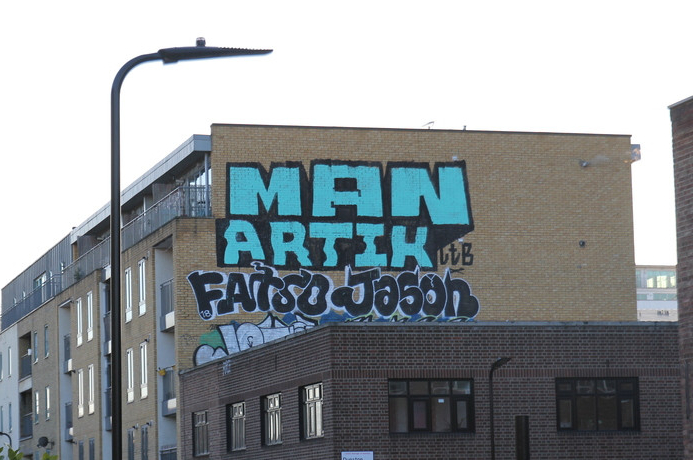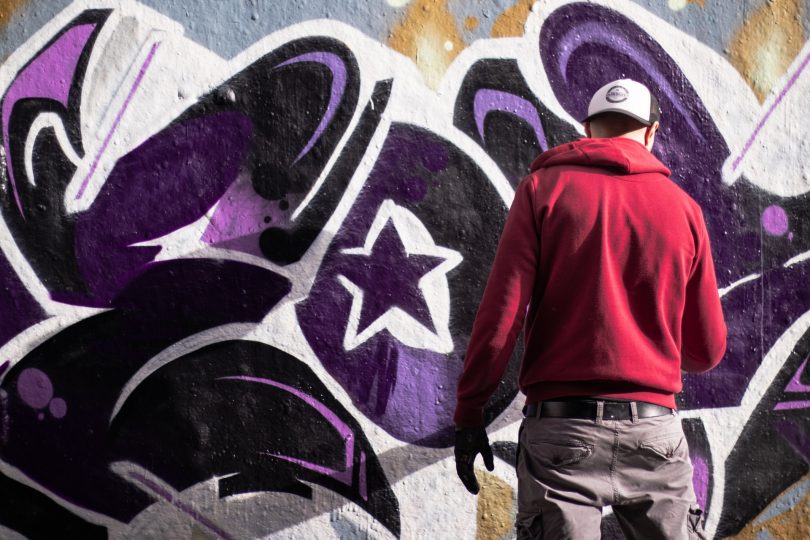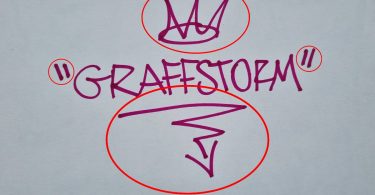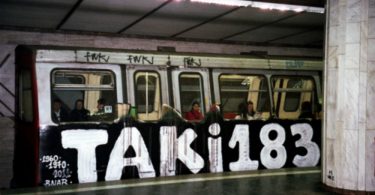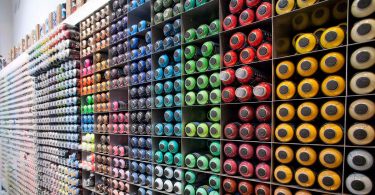Spray paint is the most popular type of paint graffiti artists use because it’s portable, extremely versatile and easy to get hold of. Ever since modern-day graffiti’s early beginnings in the 1960s, spray paint has been the most popular medium for graffiti.
But spray paint isn’t the only type of paint graffiti and street artists use. Paint marker pens for tags and small mural details, plus emulsion paint for roller graffiti and preparing walls are also commonly used.
Find out more about the different types of paint graffiti artists use, the kind of effects they allow them to achieve and some popular paint brands.
Contents
Spray Paint
Spray paint is the most popular medium for most graffiti styles.
The main reason it’s so popular is that it provides maximum freedom and control whilst painting compared to more traditional methods. Anything imaginable can be painted using spray paint to achieve a range of effects – from small and detailed to big and bold.
Spray paint can also be applied to a surface much quicker than other painting methods such as a paintbrush, which also makes it attractive. Plus, it’s much faster drying as it leaves a thinner coat compared to painting with a brush or paint roller.
However, spray paint has come a long way since it was originally invented in 1949. Nowadays, artists have a wide range of professional spray paints and graffiti caps to choose from which are specifically designed for art.
Spray paint is toxic, however, due to the paint fumes aerosol cans release. So it’s always wise to wear a respirator mask when painting.
Although most spray paint brands contain a unique paint formula, the pressure of the can is one of the main differences you’ll notice. Here’s a quick overview of the different types of spray paint pressure and popular brands.
Low Pressure Spray Paint
Low pressure spray paint is characterised by its lower level of output. That means that less spray paint comes out at one time because the can is less pressurised.
Low pressure spray paint is the preferred choice by graffiti artists creating detailed work. This is because low pressure paint allows for more control over the can, meaning it’s easier to achieve finer lines and fewer drips.
Beginner graffiti artists may prefer starting off with low pressure spray paint due to the added control it offers. Some of the most popular low pressure paint brands include Montana Gold, MTN 94 and Flame Blue.
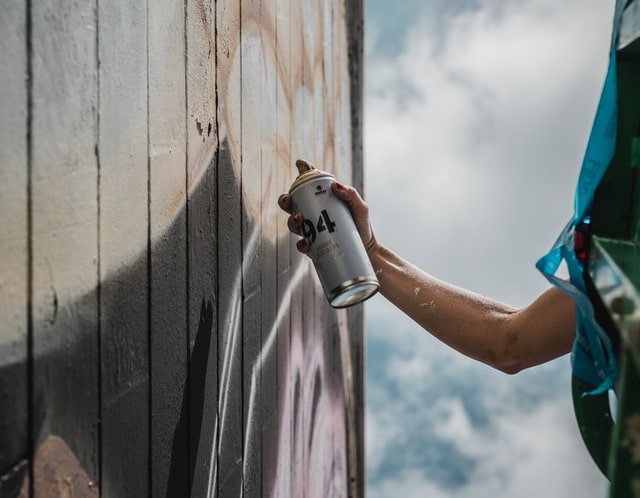
High Pressure Spray Paint
High pressure spray paint is defined by its higher level of paint output. This is because the spray can contains a higher amount of pressure. That means when it’s pressed, more paint is released.
High pressure paint is favoured by graffiti artists looking to get their pieces done quickly. It’s also used by artists who are painting big pieces, as it means less time filling large areas.
The biggest downside to high pressure paint is that it offers a lower level of control due to how fast the paint leaves the can. This means a higher chance of paint dripping – although experienced artists are able to control drips much better.
In fact, experienced graffiti artists may have little trouble switching between low and high pressure paint for detailed work, as they have a much higher level of can control.
Some of the most popular brands of high pressure spray paint include Montana Black, Flame Orange and KOBRA.
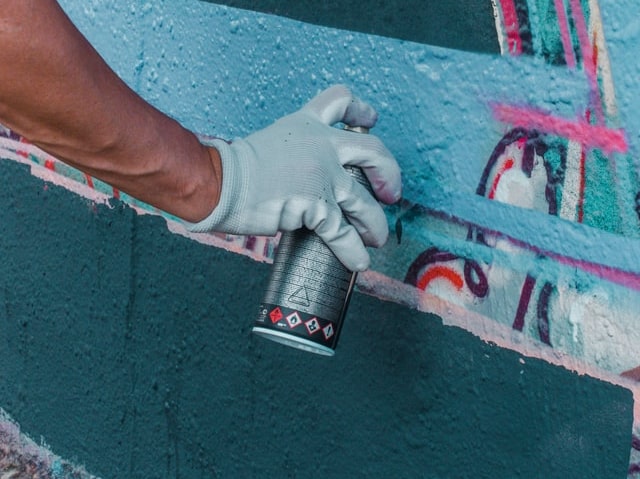
Paint Markers
Although less iconic than spray paint, another popular medium for graffiti art is paint markers.
Due to the lack of availability in the early days of graffiti, graffiti writers would often make their own paint markers. This would involve using the body of something like a pen, bingo dabber or shoe polish and filling it with a homemade paint mix.
Although many graffiti writers who stay true to the art form still brew their own paint and inks today, there are now many professional paint markers on the market to choose from.
And there are two main types of them: the pump marker and the mop-style marker.
Pump Markers
Paint pump markers are characterised by their pump valve system. This means when the nib of the pen is pressed down on a surface, paint is released and flows down to the nib.
This is unlike traditional gravity style markers as these kinds of markers use ink. For example, Copic or Stylefile markers.
The pump element is required as the paint in these pens is much thicker than ink. This means the paint is unable to freely flow to the nib of the marker without needing to be pumped in.
Some of the most popular pump-action paint markers include Posca, uni-ball and Molotow’s paint marker range.
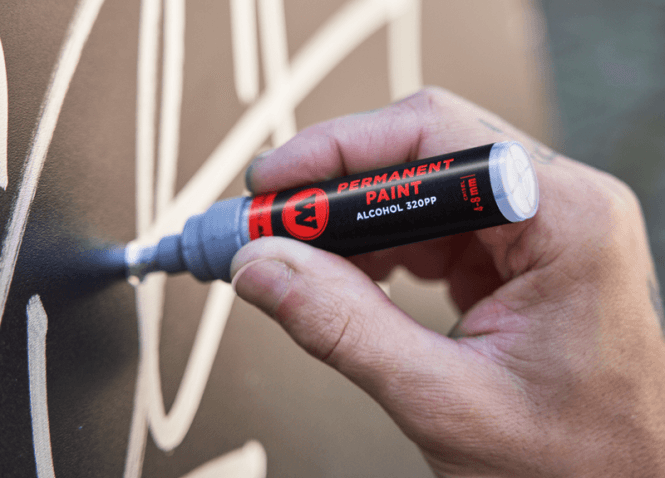
Mop-style Markers
Mop or dripper-style markers had a similar beginning to other graffiti markers.
In the early days, graffiti writers would make their own homemade mops out of bingo dabbers and shoe polish. These would be hacked by artists adding their own paint formula and modifying the nibs to make them bigger.
Mop-style markers allow for graffiti artists to produce big and bold tags, whilst also being able to produce drips. To achieve drips, the body of the pen needs to be soft so it can be squeezed – allowing excess paint to flow through.
Although it’s popular for graffiti writers to make their own, popular dripper-style markers include the Dope Dripper, MTN Street Dabber and the famous KRINK K-60.
You might like: Top 7 Best Graffiti Markers You Can Cop Right Now
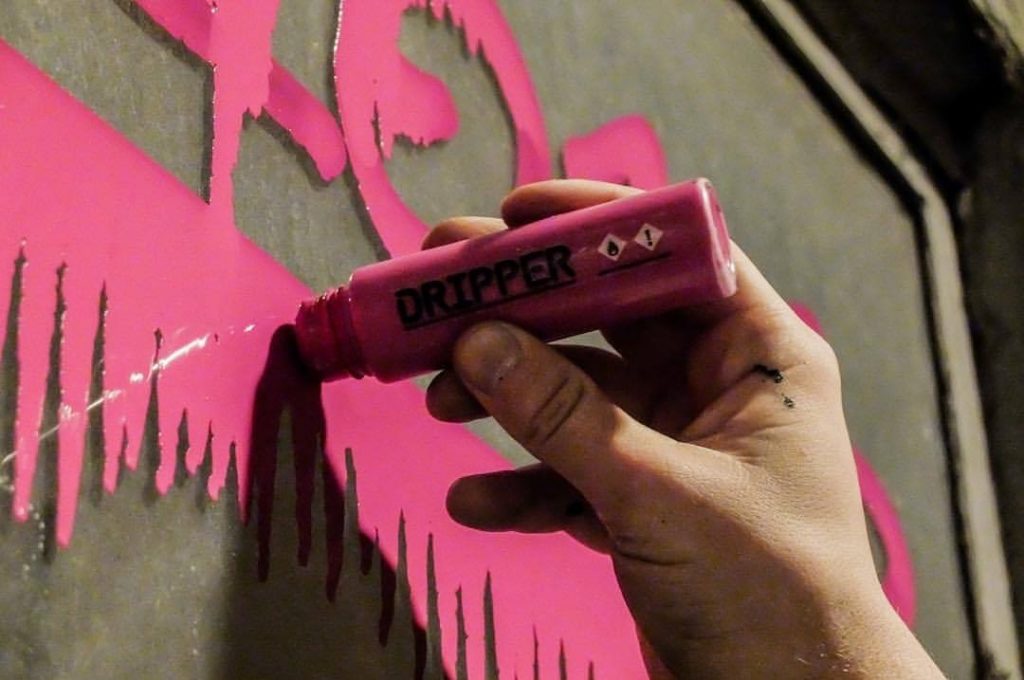
Emulsion Paint
Emulsion paint is your most common style of paint – the type that comes in a bucket and is used to paint things like walls and ceilings.
Although very different to spray paint, graffiti artists use emulsion paint more often than you’d think.
The most common purpose is to prepare a wall before using spray paints. As many popular graffiti spots are a free-for-all, an artist wanting a clean background for their piece might use emulsion paint for a solid colour background.
Emulsion paint is often used for graffiti and street art commission pieces too. This is because spray paint appears much more vibrant with an underlayer of paint compared to a raw brick wall for example, as it might absorb the paint.
Another very common use for emulsion paint is for roller graffiti. This is when graffiti artists use extended paint rollers to paint pieces in high up or inaccessible places.
This means it’s much less likely to be removed due to its placement, and also allows for huge pieces at a much cheaper price than using spray paint.
As emulsion paint is easy to find, is usually good quality and cheap – none has been specifically designed for graffiti and street art (at least with any success). Try visiting your local DIY shop if you’re after some.
